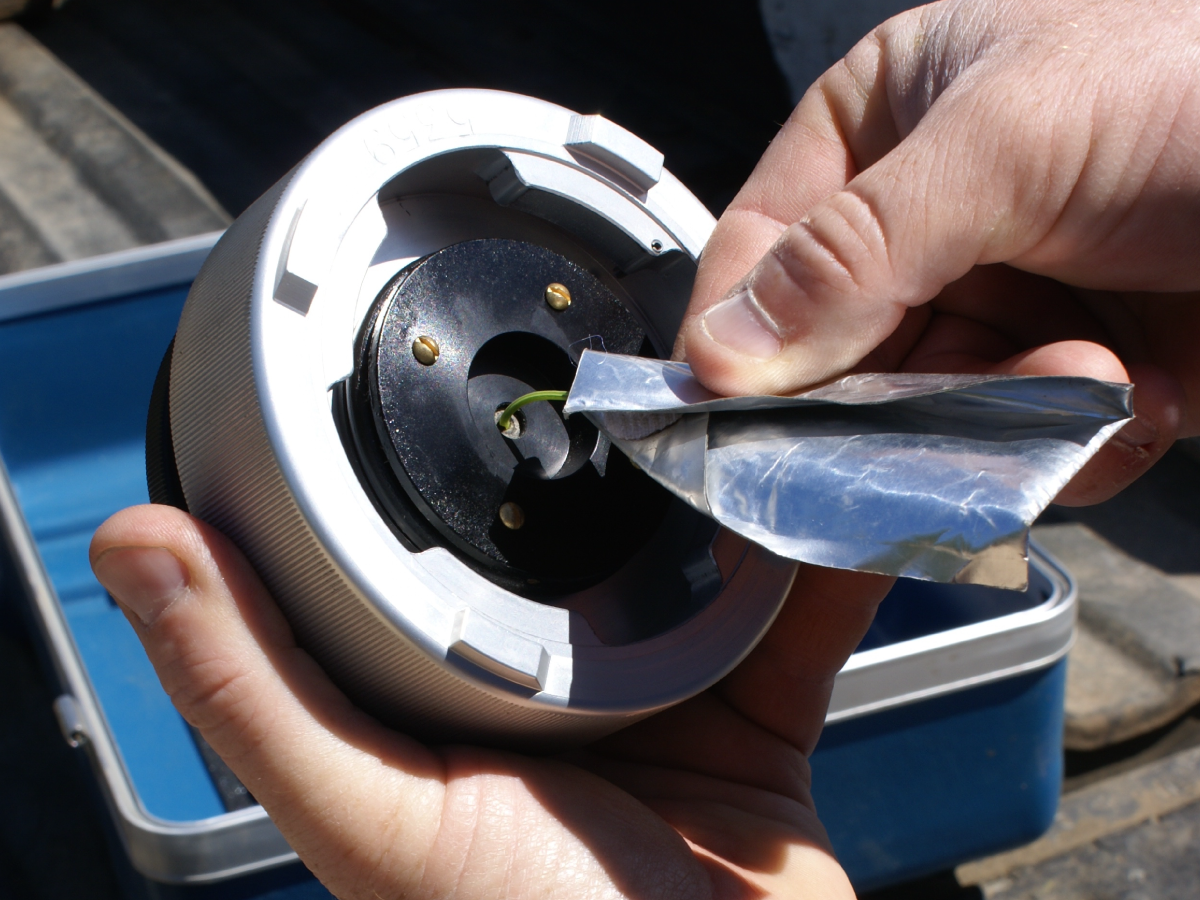
Allowing mild and moderate tree water stress in walnut can guard against root diseases and other disorders that lead to tree loss and help get through drought. On the other hand, high and severe water stress can be detrimental to shoot growth and nut size as well as kernel weight and color in walnut.
While some tree crops, such as almond and pistachio, benefit from water stress during certain growth stages, walnut is more temperamental. Stem water potential readings more than 4 bars below baseline, which roughly corresponds (depending on weather) with below -8 bars on a pressure chamber gauge, affect tree growth, productivity and quality, according to UCCE Orchard Advisor Katherine Jarvis-Shean and UCCE Irrigation and Water Resources Advisor Emeritus Allan Fulton.
In a recent article for Sac Valley Walnut News, Jarvis-Shean and Fulton outlined the specific impacts of water stress at different walnut growth stages as well as drought management strategies to prevent harmful levels of tree stress.
While shoots are growing and walnuts are sizing in May and June, water stress influences shoot growth, which, according to Jarvis-Shean and Fulton, can decrease nut size in the current year and reduce bearing wood for nuts the following year. During shell hardening in June and kernel development from July through September, water stress can also impact kernel size, weight, color and other quality parameters. Jarvis-Shean and Fulton added that severe stress during this period can also affect vegetative and floral bud formation for the following season, which in turn affects future nut set and yield potential.
Recent research shows that pressure chamber use in spring can allow for a safe delay to the start of irrigation. Researchers learned that walnut tree irrigation can be reduced by about 20% (four to eight inches of water savings) at this stage as long as stem water potential readings don’t reach more than 4 bars below baseline or about -8 bars. The impact on shoot growth and bud development is minimal, in-shell yield remains relatively stable and edible kernel is stable or improves, sometimes increasing nut value. The primary downside of delaying the start of irrigation is that smaller external nut size and weight can occur on the order of 10% or less.
Jarvis-Shean and Fulton provided helpful links to online information that can improve drought management strategies. Namely, they highlighted system distribution uniformity as an important factor to consider when checking to see that the correct amount of water is going to specific areas of the orchard. After distribution uniformity is at an acceptable level, Jarvis-Shean and Fulton suggested using evapotranspiration (ET) losses from orchards along with a pressure chamber to be sure too much water isn’t being applied and that water is staying within the root zone. Crop-specific weekly ET totals are available online.











